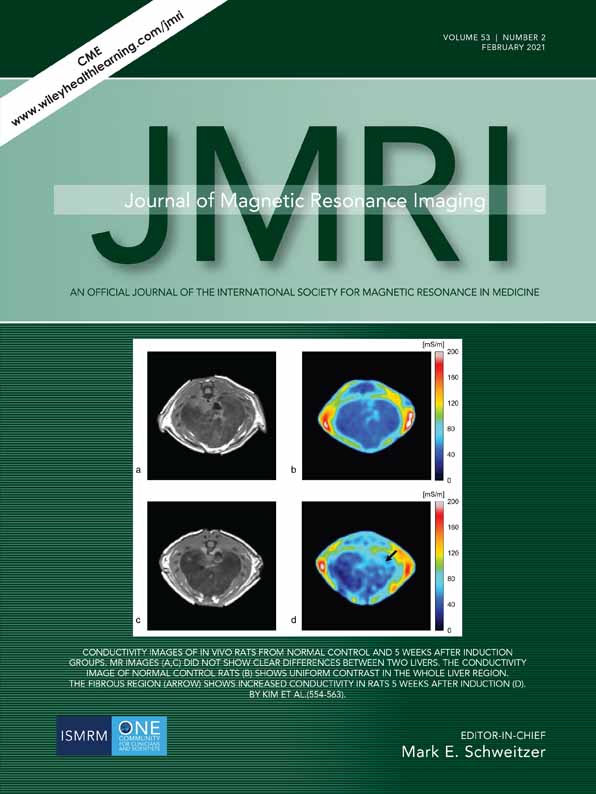Noncontrast MR Lymphography in Secondary Lower Limb Lymphedema:
Abstract
Background
Invasive imaging techniques have been applied for lymphedema (LE) assessment; noncontrast MR lymphography (NCMLR) has potential as an alternative, but its performance is not known in secondary lower limb LE.
Purpose
To assess the role of NCMRL for the classification and characterization of secondary lower limb LE.
Study Type
Retrospective.
Population
Fifty adults with clinically diagnosed secondary LE.
Field Strength/Sequence
1.5T, 3D T2-weighted turbo spin-echo, 3D T2-weighted turbo spin-echo short tau inversion recovery.
Assessment
Three radiologists assessed the following characteristics on NCMRL: honeycomb pattern, dermal thickening, muscular abnormalities, distal dilated lymphatics, inguinal lymph node number, appearance of iliac lymphatic trunks. An LE grading based on the MR images was assigned. The relationship between imaging findings and clinical staging was evaluated, as well as between dermal backflow at lymphoscintigraphy and MR staging, and between the limb swelling duration and peripheral lymphatics dilatation.
Statistical Tests
Pearson's correlation test and Cramer's V coefficient were computed to measure the strength of association. The Mann–Whitney test was used to compare the limb swelling duration between patients with and without dilated distal vessels. Agreement among raters was assessed through Kendall's W coefficient of correlation.
Results
Clinical stage and the MR grading were correlated, with Cramer's V coefficient of 1 for reader 1 (P < 0.05), 0.846 for reader 2 (P < 0.05), and 0.912 (P < 0.05) for reader 3; agreement between interraters was very good (W = 0.0.75; P = 0.05). A honeycomb pattern (P < 0.05), dermal thickening (P < 0.001), muscular abnormalities (P < 0.05), iliac lymphatic trunks appearance (P < 0.05), distal dilated vessels (P < 0.05), and lymph nodes number (P < 0.05) were significantly correlated with LE clinical stage. Dermal backflow at lymphoscintigraphy was described in 10 (20%) patients and showed a significant correlation with the MR grading (P < 0.05).
Data Conclusion
These preliminary results suggest that NCMRL may provide information useful for the staging and management of patients affected by secondary lower limb LE.
Level of Evidence 4
Technical Efficacy Stage 2
J. MAGN. RESON. IMAGING 2021;53:458–466.
Conflict of Interest
Authors declare no conflicts of interest.




